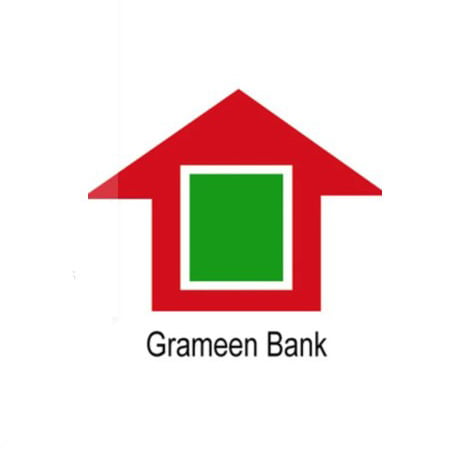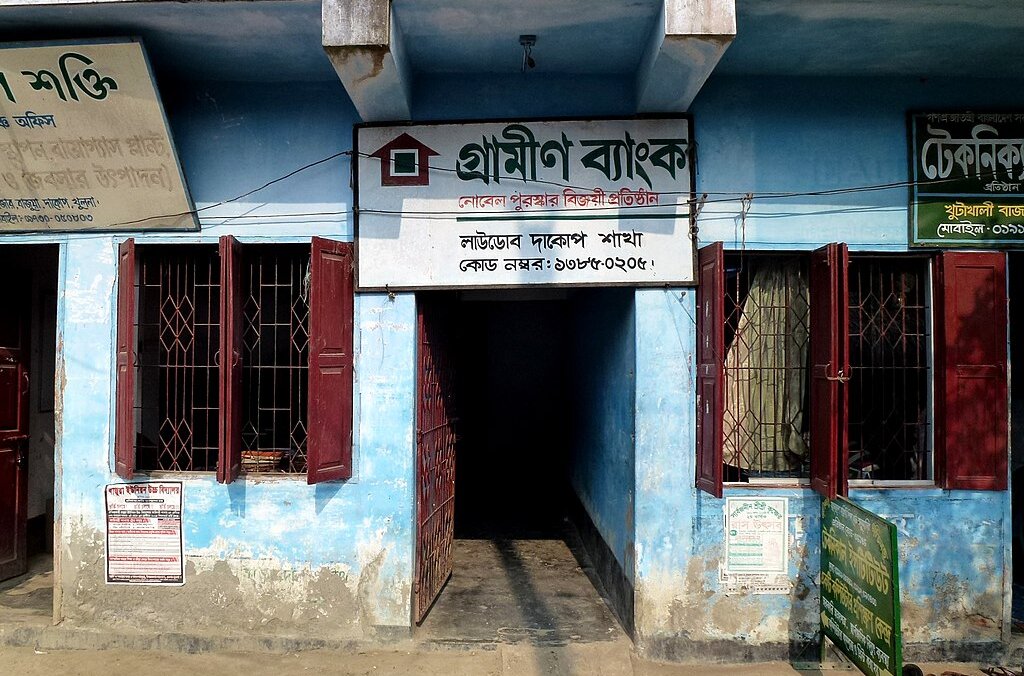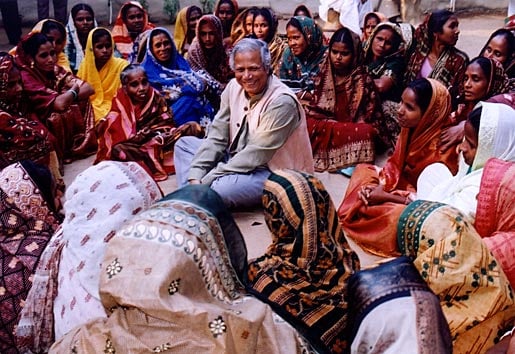Grameen Bank
Speed read
Grameen Bank was awarded the Nobel Peace Prize, jointly with Mohammad Yunus, for their efforts to create economic and social development from below.

Full name: Grameen Bank
Native name: Grameen Bank
Founded: 1976, Dhaka, Bangladesh
Date awarded: 13 October 2006
The bank of the poor
Grameen Bank (village bank) has millions of members in Bangladesh. The bank provides loans and other services to people who would otherwise have no access to such assistance. Loans are granted for income-generating activities, such as purchasing farm animals which can be turned into goods for sale. Families and local communities prosper as a result of the bank’s services, and it has inspired similar efforts worldwide. Muhammad Yunus, the bank’s founder, started lending money to poor people in Jobra in 1976. The project became a proper bank in 1983. Villages all over Bangladesh have a Grameen branch and in 2006 96 per cent of the borrowers were women. The Grameen model has given people worldwide the chance to create a better life for themselves and contribute to local development.
"Poverty is created by the system we created … If we can fix the system, we can cure poverty."
Muhammad Yunus, 4 february 2005
A rather unusual bank
Grameen Bank started by offering microloans. In 2006 the bank also offered a number of other services, such as savings schemes, money transfer and telecommunications services. In May 2006 the bank had 6.7 million loan-holders and more than 2,000 banking centres. The bank offered loans to people in more than 70,000 villages in Bangladesh.

Why loans to women?
When it started, Grameen Bank lent money to both men and women, but Yunus noticed that women were more reliable when it came to repaying their loans, and the money they earned often benefited the entire family. In 2006, 96 per cent of Grameen Bank’s loan-holders were women. At its many centres, Grameen Bank offers the women financial advice. Once a week they meet as a group and discuss among themselves how the money can be put to the best possible use. The loans make it easier for women to earn money and create a decent life for themselves and their families.

Copyright © Grameen Bank Audio Visual Unit, 2006
From his own pocket
Yunus presented his idea to the established banks, but they were sceptical. The bankers did not believe that poor people would be able to repay the money they had borrowed. Yunus began to lend money from his own pocket, and gave borrowers advice about how to put it to the best use. He soon saw that people repaid what they had borrowed. Eventually Yunus started borrowing money that he then lent to those who wanted a microloan. And in 1983 he set up Grameen Bank – the village bank.
Vicious circle
Yunus realised that poor people did not have the money to go into business for themselves. For the want of a few start-up dollars they could not afford to buy the tools, raw materials or animals that would allow them to make a living. Normal banks refused to grant loans to people with nothing to offer as security. Yunus had a simple idea. Lending people a small amount of money – a microloan – would enable them to start their own businesses and thereby climb out of poverty.
Disclaimer: Every effort has been made by the publisher to credit organisations and individuals with regard to the supply of photographs. Please notify the publishers regarding corrections.
Nobel Prizes and laureates
Six prizes were awarded for achievements that have conferred the greatest benefit to humankind. The 12 laureates' work and discoveries range from proteins' structures and machine learning to fighting for a world free of nuclear weapons.
See them all presented here.
